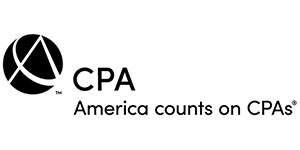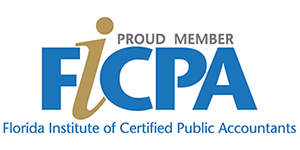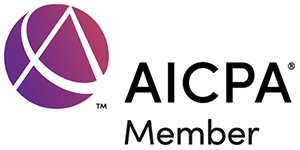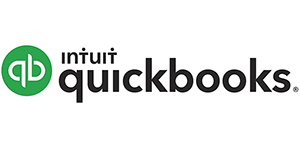Miss last month's newsletter? No problem. We keep the last 8 months of newsletters here for you to read.
Clean Vehicle Credits Expire September 30
If you’ve been pondering the purchase of a new or used electric vehicle for yourself or your business, you may want to buy sooner rather than later to take advantage of available tax credits. Under the One, Big, Beautiful Bill Act (OBBBA), these credits won’t be available for purchases made after September.
Individual Credits
The Clean Vehicle Credit (Sec. 30D) was scheduled to expire after 2032. Under the OBBBA, the credit is available only through September 30, 2025. In 2022, the Inflation Reduction Act (IRA) significantly expanded the credit for qualifying clean vehicles placed in service after April 17, 2023. For eligible taxpayers, it extended the credit to any “clean vehicle,” including electric vehicles, hydrogen fuel cell cars and plug-in hybrids.
The maximum credit for new vehicles is $7,500, based on meeting certain sourcing requirements for 1) critical minerals and 2) battery components. Clean vehicles that satisfy only one of the two requirements can qualify for a $3,750 credit.
Vans, pickup trucks and SUVs with a manufacturer’s suggested retail price (MSRP) of more than $80,000 don’t qualify for the credit, nor do automobiles with an MSRP higher than $55,000. Qualified vehicles also must undergo final assembly in North America.
The IRA also created a new credit, Sec. 25E, for eligible taxpayers who buy used clean vehicles from dealers. The credit equals the lesser of $4,000 or 30% of the sale price. But the credit can’t be claimed at all if the sale price is over $25,000. The OBBBA also ends this credit after September 30, 2025.
These credits are unavailable to taxpayers with incomes exceeding certain amounts, and additional rules and limits apply.
Business Credit
The OBBBA also eliminates the tax incentive for a business’s use of clean vehicles. The Qualified Commercial Clean Vehicle Credit (Sec. 45W) had been scheduled to expire after 2032. It’s now available only for vehicles acquired on or before September 30, 2025. Depending on vehicle weight, the maximum credit is up to $7,500 or $40,000.
Additional rules and limits also apply to this credit.
Do Your Due Diligence
While these credits can be valuable, don’t rush to purchase a clean vehicle without doing your due diligence. Check whether the vehicle you want to buy is qualified and that you would indeed be eligible to claim the credit. If you have questions regarding any of these clean vehicle credits (or other tax breaks related to purchasing a vehicle) please don’t hesitate to contact the office.

Should You Be Making Estimated Payments?
If your federal tax withholding isn’t enough to cover your total tax liability, you may need to make estimated tax payments. This typically applies if you have income from sources such as interest, dividends, capital gains or self-employment. The following rules explain how to make these payments without incurring an underpayment penalty.
How Much to Pay and When
Individuals subject to estimated tax requirements generally must pay 25% of a “required annual payment” by April 15, June 15 and September 15 of the tax year and January 15 of the following year to avoid an underpayment penalty. If one of those dates falls on a weekend or holiday, the payment is due on the next business day.
So the third installment for 2025 is due on Monday, September 15. Payments are made using Form 1040-ES and may be made electronically or on paper.
Who Must Pay
The general rule is that you may have to pay estimated tax for 2025 if both of these conditions apply:
1. You expect to owe at least $1,000 for 2025, after subtracting your withholding and tax credits, and
2. You expect your withholding and tax credits to be less than the smaller of:
90% of your 2025 tax liability or 100% of your 2024 tax liability (110% if your 2024 adjusted gross income was more than $150,000, or $75,000 if you’re married filing separately in 2025).
Calculating Payments
If you do have to pay estimated taxes, calculating them requires projecting total income, deductions, credits and withholding for the year. After determining the required annual payment, divide that number by four and make four equal payments by the due dates.
But you may be able to use the annualized income method to make smaller payments during part of the year. This method is helpful to people whose income flow isn’t uniform over the year, perhaps because the business is seasonal.
For example, suppose your income comes exclusively from a business operated in a resort area during June, July and August. In that case, you may not have to make an estimated payment, or as large a payment, for the first two installments, and then you’ll need to “catch-up” when you make the third installment payment.
For More Information
If you have questions about the estimated tax rules and how they apply to you, contact the office.

The Quirky Math of Partnership Income
When it comes to taxation, partners in a business may find the math a bit puzzling. You may discover that the amount of partnership income you’re taxed on is more than the amount that was distributed to you. That’s a quirk of taxation that lies in the way partnerships and partners are taxed.
Pass-Through Taxation
Partnerships aren’t subject to income tax at the entity level. Instead, each partner is taxed on the earnings of the partnership, even if the profits aren’t distributed.
Similarly, if a partnership incurs a loss, it’s passed through to the partners. (However, various rules may prevent partners from currently using their shares of the partnership’s losses to offset other income.)
Filing Responsibilities
A partnership must file an information return, IRS Form 1065, “U.S. Return of Partnership Income.” On this form, the partnership separately identifies income, deductions, credits and other items.
This allows partners to properly treat items that are subject to limits or other rules that could affect their treatment at the partner level. Examples of items that may require special treatment include capital gains and losses, interest expense on investment debts, and charitable contributions. Each partner receives a Schedule K-1, showing their share of partnership items for the tax year.
Basis and distribution rules ensure that partners aren’t taxed twice. A partner’s initial basis in his or her partnership interest (which varies depending on how the interest was acquired) is increased by his or her share of partnership taxable income. When that income is paid out to partners in cash, they aren’t taxed on the money if they have sufficient basis. Instead, partners reduce their basis by the amount of the distribution. If a cash distribution exceeds a partner’s basis, then the excess is taxed to the partner as a gain.
Heads Up!
Understanding the ins and outs of partnership taxation can help you avoid surprises come tax time. If you’re unsure how these rules apply to your specific situation, especially with complex items such as losses or special allocations, don’t hesitate to reach out. Contact the office for help with the math and whatever other questions you may have.

Timing a Roth IRA Conversion
Now might be a good time for some taxpayers to convert their traditional IRA to a Roth IRA. Traditional IRA withdrawals are taxed and, if taken early, may be subject to penalties. Also, required minimum distributions (RMDs) must be taken starting at age 73 (or 75 if you won’t turn 73 until after 2032). But qualified Roth IRA withdrawals are tax-free, you can access Roth contributions anytime tax- and penalty-free, and there are no RMDs for Roth accounts.
Converting a traditional IRA to a Roth can allow you to turn tax-deferred future growth into tax-free growth and take advantage of a Roth IRA’s other benefits. But, taxes are due on the converted amount. If your traditional IRA’s value has dropped due to market volatility or you’re in a lower-than-usual tax bracket this year, your tax bill on a conversion will be lower.
Ideally, pay taxes with non-IRA funds to preserve future tax-free growth potential. Conversions work best if you don’t need the money soon, giving it time to grow. You can even spread conversions across multiple years to reduce the tax impact. A Roth conversion can be a smart move, but it’s not for everyone. Contact the office to explore your options.

There's No Advantage to Last-Minute Tax Return Filing
If you requested an extension to file your tax return after the April 15, 2025, due date, the extended deadline is Wednesday, Oct. 15. If you have the information you need, consider filing now. There’s no advantage to waiting, and last-minute filing may lead to stress and worry.
If you’re concerned about paying any tax owed, the IRS offers short- and long-term payment plans, as well as installment agreements, to taxpayers who qualify. It’s important to act quickly if you owe because any amount that was due April 15 accrues interest until the balance is paid. So, as soon as possible, gather your 2024 tax year records and contact the office for a tax preparation appointment or to ask questions you may have.

Bonus Depreciation Gets a Reprieve
First-year bonus depreciation had been phasing down 20 percentage points annually since 2023 and was set to drop to 0% in 2027. Businesses have been eager to learn the fate of this popular depreciation-related tax break. The good news is that the One, Big, Beautiful Bill Act makes permanent 100% first-year bonus depreciation for the cost of qualified new and used assets acquired and placed in service after Jan.19, 2025.
If you’d been holding off on investing in qualified assets such as office furniture, equipment and off-the-shelf computer software because 2025 bonus depreciation had been only 40%, you may want to move ahead now. Remember, assets must not just be acquired but also be placed in service by Dec. 31 for you to claim 100% bonus depreciation on your 2025 calendar year tax return. Contact the office to learn about these and other business-related tax provisions in the law.

Working With Reports in QuickBooks
You probably make dozens of decisions every day that affect your business. Every time you make a phone call, respond to an email, or have a conversation with a colleague, it’s likely that you’re moved to take some action. You might order more inventory, raise a customer’s credit limit or respond to an estimate you received.
You can make some decisions off the cuff based on your knowledge of the situation or some new information you received. But sometimes you need more details. And you need to see those details in a format that combines multiple related transactions or customers.
That’s why reports are so important in QuickBooks — and why Intuit made them so plentiful and customizable. You can’t make smart decisions without seeing what’s working and what isn’t. Which products and services are selling well, and which aren’t? Are customers late with payments? Are you meeting your own financial obligations responsibly? Here’s how to use QuickBooks’ reports effectively and comprehensively.
Shaping Your Foundation
Even if you’ve been using QuickBooks for a long time, you may not have explored its report settings. There are numerous ways you can make some report setup decisions. Open the Edit menu and select Preferences. Scroll down and click Reports & Graphs. Under My Preferences, you can ask to be prompted to modify report options before opening a report and make your wishes known about graph displays, for example, do you want them to refresh automatically?
Company Preferences are more complex. Do you want summary reports to display on a cash or accrual basis? Other options here involve how aging reports determine their starting point and how you want accounts to be displayed. You can also set up default formatting for reports and assign accounts to actions in the Statement of Cash Flows.
Click OK when you’re done.

Getting Started
Open the Reports menu. If you don’t have a lot of experience with reports in QuickBooks, open the Report Center. It’s missing several of the options in the Reports menu (more about this later), but it allows you to access the most common reports.
Let’s say you want to find out which inventory items you sold into the commercial market during this fiscal year were the most profitable and which weren’t making enough profit. Click Jobs, Time & Mileage in the toolbar, then click the Run icon below the Item Profitability report model. You can get some general information from the default settings: what you paid for each item, its sale price, and the percentage difference (profit).
Customizing the Report
There are a couple of ways you can narrow down the results to find the content you want. Click Customize Report in the upper left corner. The Display tab is highlighted, showing you your options for this specific report’s format (this varies depending on the report). You can change three things here, as you can see in the image below:

- The Date Range for the report,
- The display options for your main Columns, like Totals only or Month, and,
- Whether your subcolumns display profit in dollars or percentages.
If you need help customizing your reports to get the information you need, contact the office for help.
Filtering Your Report
You need to change some more settings to make your report contain only the information you want. Click the Filter tab. This window has three sections. The first is a list of the filters available. The second provides your options for the filters you select. And the third simply lists the filters you’ve chosen.
You’ll notice that QuickBooks has already selected This fiscal year for your Date filter, based on the change you made to the Display. You need to add two more filters to meet your goal for this report (the range of profitability for inventory items purchased by your commercial customers). Scroll down in the Filter list and click Customer Type. In the middle column, open the drop-down menu and select Commercial. Then scroll down again to Item and click All inventory items. The window would look like the one pictured below.

When you’re done, click OK, and your customized report will appear.
TIP: As you may know, you can export QuickBooks reports into Excel. If your customization results in a very lengthy list, you might want to to export your report and sort it, so your profitability percentages or dollar amounts display in ascending or descending order. That way, you can easily see what’s making money and what’s not.
A Critical Skill
You can choose not to customize QuickBooks reports much at all. It may be that the default settings work for you. But it’s important that you understand how to change the display and filter settings of your reports when you need to do so. Please contact the office if you have questions or need assistance. Contact the office for answers to your questions.

Upcoming Tax Due Dates
August 15
Employers: Deposit nonpayroll withheld income tax for July if the monthly deposit rule applies.
Employers: Deposit Social Security, Medicare and withheld income tax for July if the monthly deposit rule applies.
September 10
Individuals: Report August tip income of $20 or more to employers (Form 4070).

How to Choose the Right Consultant for Your Industry

Finding the right consultant can make all the difference in the success of your business. Whether you’re navigating tax complexities, planning for growth, or addressing operational challenges, the right expert brings clarity and direction. But not all consultants are created equal. Choosing one who understands your industry can lead to smarter decisions, better results, and more confidence in your financial future.
Know What You Need Help With
Before you start searching, take time to define the problem you’re trying to solve. Are you looking for help with tax strategy, business structure, payroll, or something else entirely? When you know exactly what you need, you’ll be better equipped to find someone with the right skills.
A good consultant will ask smart questions and offer insights, but the process starts with you. Identifying your goals helps ensure the partnership is focused and productive from day one.
Look for Industry Experience
Every industry has its own language, pain points, and regulations. That’s why it’s so important to find a consultant who already understands the unique challenges you face. If they’ve worked with clients in your field, they’ll be quicker to identify solutions that actually work.
Ask for examples of clients they’ve helped in similar industries. A consultant with relevant experience will be able to show you how their past work can translate into value for your business.
Evaluate Their Credentials and Communication Style
Credentials matter, but so does how a consultant communicates. You want someone who knows their stuff but can explain it in a way that makes sense to you. Whether you prefer email updates, regular check-ins, or collaborative meetings, your consultant should adapt to your style.
Look for:
- Certifications relevant to your needs (CPA, EA, MBA, etc.)
- A clear, client-friendly approach to communication
- Transparency about fees and timelines
If someone seems overly complicated or vague, keep looking. The best consultants make you feel informed and supported.
Ask the Right Questions Before Hiring
A great consultant will welcome your questions and answer them honestly. Use the initial consultation to assess not just their qualifications, but also how well they listen and respond to your concerns.
Consider asking:
- What is your experience in my industry?
- Can you walk me through a recent success story?
- How do you stay current with industry trends and regulations?
- What does your client onboarding process look like?
Their answers will help you gauge whether they’re a good fit for both your business needs and working style.
Building a Long-Term Relationship
Choosing the right consultant isn’t just about solving an immediate problem. Ideally, you’ll find someone who can grow with your business. A strong working relationship means better advice, quicker resolutions, and more trust over time.
Keep communication open, provide feedback, and involve them in key financial planning. When your consultant becomes a trusted partner, they can help you stay ahead of challenges and seize new opportunities.
Make the Decision That Moves You Forward
Hiring a consultant is an investment in your business. By taking the time to find someone who aligns with your goals, understands your industry, and communicates clearly, you’re setting yourself up for success. Don’t rush the process. The right expert will not only guide you through today’s questions but also help you build a stronger, more resilient future.
The post How to Choose the Right Consultant for Your Industry first appeared on www.financialhotspot.com.
Navigating Trust Tax Returns: What Every Trustee Should Know

Serving as a trustee is a significant responsibility. You are not only managing assets for the benefit of others but also ensuring that the trust remains in compliance with legal and tax obligations. One of the most important duties you will face in this role is handling the trust’s tax return.
Filing taxes for a trust is very different from filing your personal return. The rules can be complex, and the consequences of a mistake can be costly. Understanding your obligations, deadlines, and reporting requirements is essential to fulfilling your role as trustee effectively.
When a Trust Needs to File a Tax Return
Not all trusts are required to file a tax return each year. Whether or not one is needed depends on the type of trust and the amount of income it generates. In general, if the trust earns any taxable income or earns more than $600 in annual gross income, or it must file IRS Form 1041. This is the U.S. Income Tax Return for Estates and Trusts.
This return reports income earned by the trust, such as interest, dividends, rent, or capital gains. It also details any distributions made to beneficiaries, which can affect how and where the income is taxed.
Understanding Form 1041
Form 1041 is the primary document used to report a trust’s income, deductions, and tax liability. As trustee, you are responsible for preparing and filing this form unless you hire a tax professional to assist you.
Some key points to understand about Form 1041 include:
- It is due by April 15 (or the next business day if it falls on a weekend or holiday), similar to individual tax returns.
- Income retained by the trust is taxed at the trust’s rate, which is typically higher than individual tax rates.
- Income distributed to beneficiaries is passed through and taxed on their personal returns. In this case, you must issue a Schedule K-1 to each beneficiary showing their share of the trust’s income.
The trust’s tax strategy, which determines whether to retain income or distribute it, can have a major impact on its overall tax liability.
The Role of the Trustee
As a trustee, you are considered a fiduciary, which means you have a legal obligation to act in the best interest of the beneficiaries. This includes managing the trust’s finances with care and attention to detail.
One of your primary responsibilities is to keep detailed records. This means tracking all income received by the trust, all expenses paid, and any distributions made to beneficiaries. Accurate documentation is essential for preparing tax returns and responding to any questions from tax authorities.
Working with professionals is often a wise choice. A certified public accountant or tax advisor with experience in trust taxation can help ensure that everything is reported correctly and in compliance with both federal and state laws.
Communication is also key. Letting beneficiaries know when to expect their Schedule K-1 forms and explaining how distributions may affect their personal taxes builds trust and transparency. Finally, reviewing the trust document itself is an important step. The language of the trust may include instructions about how income should be managed, and you are responsible for honoring those terms.
Common Mistakes to Avoid
Trustees often face challenges when it comes to taxes. Some of the most common mistakes include:
- Filing late or failing to file at all
- Misreporting income or deductions
- Not issuing Schedule K-1 forms to beneficiaries
- Failing to understand state tax obligations
These errors can result in penalties, interest, or audits. By staying organized and seeking expert guidance, you can avoid costly oversights.
Staying Informed and Compliant
Trust taxation is not something to take lightly. The IRS treats trusts as separate legal entities, and the rules that apply are detailed and sometimes confusing. As a trustee, your role includes protecting the financial health of the trust and ensuring it operates within legal boundaries.
If you are unsure about how to file a trust tax return or manage its income, do not hesitate to seek professional help. Taking the time to understand your duties and file correctly will help you avoid complications and preserve the trust’s value for the beneficiaries it was created to support.
The post Navigating Trust Tax Returns: What Every Trustee Should Know first appeared on www.financialhotspot.com.
Tips for Migrating from Spreadsheets to Bookkeeping Software

If you’ve been using Excel to manage your business finances, you’re not alone. Many small business owners start with spreadsheets because they are familiar, flexible, and easy to use. But as your business grows, keeping everything organized manually can become time-consuming and prone to mistakes.
Eventually, migrating to dedicated bookkeeping software is more than just a smart upgrade. It becomes necessary. Financial software offers automation, accuracy, and tools for compliance that spreadsheets simply cannot provide. While making the switch may seem like a challenge, a well-planned approach can make the transition smooth and successful.
Why the Change Matters
Bookkeeping software is designed to do more than track income and expenses. It can connect directly to your bank accounts, automate repetitive tasks, generate real-time reports, and help you meet tax obligations more efficiently. It also significantly reduces the chance of human error, which is a common issue when managing finances manually.
When you move to financial software, you streamline your processes and gain better insight into your business’s financial health.
Get Organized Before You Transition
Before you begin transferring data into a new system, it is important to tidy up your existing records. Review your spreadsheets for inconsistencies, missing entries, or duplicate data. Clean and consistent records will make the migration process much easier.
You should also review your chart of accounts. These are the categories you use to classify your income, expenses, assets, and liabilities. Having a clear and accurate chart of accounts will help you configure your new bookkeeping software properly from the beginning.
Choose the Right Bookkeeping Software
Selecting the right software depends on the nature of your business and how you prefer to manage your finances. Some programs are ideal for freelancers and small service providers, while others are designed to support inventory tracking, payroll, or larger teams.
When evaluating options, consider features such as:
- Integration with your bank accounts
- Invoicing and payment tracking
- Payroll management
- Tax calculation and reporting tools
- Mobile app access and cloud storage
You should also decide whether a cloud-based platform or desktop software is the better choice for your workflow. Cloud-based systems tend to offer real-time access, regular updates, and automatic backups, making them a popular choice for small businesses.
Key Tips for a Smooth Migration
Moving your financial data into bookkeeping software can be straightforward if you follow a few practical steps:
- Begin at the start of a new month or quarter. This helps ensure cleaner records and a clear point of transition.
- Upload recent data first. You do not need to import years of financial history all at once. Begin with the current year and add older data only if needed.
- Use import tools provided by your software. Most platforms allow you to upload Excel or CSV files, but make sure the formatting meets their requirements.
- Check account balances. After importing, verify that your bank balances, invoices, and expense totals match your original records.
- Ask for support. If you feel unsure, working with a bookkeeper or accountant can make the transition much easier and more accurate.
Be Patient with the Learning Process
Even if you are skilled with spreadsheets, using bookkeeping software will feel different at first. Expect a learning curve, but know that most platforms offer tutorials, customer support, and help centers to guide you through the process.
As you become familiar with the system, you will begin to appreciate how much time and effort you save. Many routine tasks, like categorizing expenses, generating reports, and sending invoice reminders, become automatic.
Set Your Business Up for Success
Moving from Spreadsheets to bookkeeping software is more than just a tech upgrade. It is a strategic decision that improves the accuracy, security, and efficiency of your financial management. With better tools in place, you can spend less time tracking transactions and more time focusing on growth.
If you’re ready to take control of your finances with less stress, now is a great time to get organized and explore software options that match your needs. The switch may take a little time, but the long-term benefits are well worth the effort.
The post Tips for Migrating from Spreadsheets to Bookkeeping Software first appeared on www.financialhotspot.com.
5 Common Strategies for Paying Off Debt

If you’re carrying debt, you’re not alone. Many people juggle credit card balances, student loans, car payments, or medical bills while trying to manage everyday expenses. No matter how much you owe, taking control of your debt is possible with the right strategy and a realistic plan.
There’s no one-size-fits-all solution, but the key is to find an approach that works for your situation and helps you stay motivated. Whether you want to reduce interest, simplify payments, or free up room in your budget, the following strategies can help you get started.
1. The Snowball Method
The snowball method focuses on paying off your smallest debts first while continuing to make minimum payments on the rest. Once the smallest balance is gone, you roll that payment into the next smallest debt, and so on.
This strategy builds momentum and motivation by giving you early wins. Knocking out smaller balances can feel rewarding and keep you focused, even if the method does not always save the most on interest.
2. The Avalanche Method
The avalanche method takes a more mathematically efficient approach. You focus on paying off the debt with the highest interest rate first while making minimum payments on the others. Once the highest-interest debt is gone, you move to the next one.
This strategy can save you more money in the long run by reducing the total interest paid. It requires discipline and patience, especially if your largest balance also has the highest interest rate.
3. Debt Consolidation
Debt consolidation involves combining multiple debts into a single loan or line of credit. This could mean using a personal loan, balance transfer credit card, or home equity loan to pay off higher-interest balances.
By consolidating your debt, you may benefit from a lower interest rate, simplified monthly payments, and a clearer payoff timeline. Just make sure you understand the loan terms and avoid taking on new debt while you pay off the consolidated balance.
4. Budget-First Approach
Before choosing a specific payoff method, it can be helpful to evaluate your overall financial picture. Creating a detailed budget allows you to identify areas where you can reduce spending and redirect those funds toward your debt.
Even small adjustments, like cutting back on subscriptions or dining out less frequently, can add up over time. Tracking your expenses and setting limits helps you stay accountable and frees up money to pay off debt more aggressively.
5. Working with a Financial Professional
If you feel overwhelmed or unsure where to begin, working with a financial advisor or credit counselor may be a smart move. A professional can review your situation, recommend a strategy, and even negotiate with creditors on your behalf in some cases.
Here are a few ways a financial professional may assist you:
- Help you choose the most effective payoff strategy for your goals and income
- Offer budgeting advice and long-term planning tools
- Identify potential programs or options for reducing interest or payments
- Provide accountability and support throughout the process
Seeking help does not mean you have failed. In fact, it shows that you are taking your financial future seriously.
Choosing the Strategy That Works for You
Paying off debt is a journey that takes time, commitment, and consistency. The best strategy is the one you can stick with, based on your lifestyle, personality, and financial situation. You may even combine methods or adjust your plan as your circumstances change.
What matters most is that you start. By taking small, steady steps toward becoming debt-free, you can reduce stress, improve your credit, and build a more secure financial foundation.
The post 5 Common Strategies for Paying Off Debt first appeared on www.financialhotspot.com.
Copyright © 2025 All materials contained in this document are protected by U.S. and international copyright laws. All other trade names, trademarks, registered trademarks and service marks are the property of their respective owners.








